Table of contents
Unenriched durum wheat semolina is a raw processed product of durum wheat ( Triticum durum), also known as durum, durum wheat or glass wheat. Durum wheat semolina contains a slightly higher protein content and has a slightly different composition than soft wheat semolina, as it contains larger amounts of the gluten protein. Usually also available organically.
Using durum wheat semolina in the kitchen:
Compared to soft wheat semolina, durum wheat semolina tastes more hearty and has a firmer bite. It is therefore used in heartier dishes. Depending on the size of the semolina, different preparation methods are recommended. Coarsely ground semolina is very suitable for soups, as a soup garnish or for Knöpfli (spätzle), medium-ground durum wheat semolina is excellent for making dry pasta and fine durum wheat semolina is used for fresh pasta (pasta or pizza) or for filled doughs. The high gluten content in durum wheat semolina ensures that the pasta retains its shape in water and does not fall apart. You can also make semolina dumplings or pudding and find many other durum wheat semolina recipes. 1
In the following paragraph, typical dried products made from durum wheat semolina are listed and described in more detail:
- Couscous : In the Berber language, the word couscous means "well-formed, well-rounded". Couscous is served as a side dish with meat, fish and vegetable dishes. The traditional method of production is very complex, which is why couscous for the trade is only produced industrially and with the help of machines. 3
- Noodles / Pasta: Noodles are available in all shapes and sizes and can be used as a side dish in a variety of dishes. A distinction is made between dried pasta (usually industrially produced) and fresh pasta (usually made by hand).
Please note with Bulgur : Bulgur is not made from semolina, but from durum wheat grains that are ground into groats or coarse meal. Bulgur is an important part of oriental cuisine and is often served as a side dish or in salads. Since bulgur is pre-cooked, it can be prepared very quickly. Simply pour hot water over it and let it sit for 15-20 minutes, then it is ready to serve. 2
Vegan recipe for semolina porridge made from durum wheat semolina:
Ingredients (for 4 servings): For the porridge: 150 g durum wheat semolina (raw, organic?), 1 l soy milk (or oat milk), 1 cinnamon stick, 1 tbsp cane sugar. For the topping: 75 g cane sugar, 1 tbsp hazelnuts (or walnuts) and macadamia nuts (roughly chopped), 2 tsp vanilla sugar ( bourbon vanilla orvanilla powder is better), 1 tsp cinnamon, orange peel from one orange, 50 g dried mango, ½ tsp salt.
Preparation: Preheat the oven to 180 °C (top and bottom heat). Bring the soy milk to the boil in a saucepan together with the cinnamon stick, sugar and vanilla sugar. As soon as the milk boils, add the durum wheat semolina and simmer for 2 minutes. Then remove the cinnamon stick. Mix the ingredients for the topping together except for the mango and spread on a baking tray. Bake the mixture in the oven for 10 minutes and then remove the tray. Turn the nut mixture, add the mangos and bake for another 10 minutes. Remove the tray from the oven again and allow the topping to cool completely. Garnish and serve the vegan semolina porridge with the cooled mango-nut mixture as a topping. Of course, the topping also tastes great without heating and with less sugar.
Vegan recipe for spaetzle made from durum wheat semolina:
Ingredients (for 4 servings): 4 tablespoons durum wheat semolina (raw, organic?), 400 g wheat flour, 400-500 ml plant milk (soy milk, oat milk), 2 teaspoons sea salt (or less), 3 tablespoons cornstarch, ½ teaspoon turmeric (for the color), (possibly: ½ teaspoon Kala Namak, a black salt that is reminiscent of an egg flavor).
Preparation: Mix all the ingredients in a large bowl. The dough should not be too runny, but should tear off the spoon in a viscous way. Now bring water and salt to the boil in a large pot. As soon as the water is boiling, put the dough in a spaetzle press and press the spaetzle into the boiling water. If you don't have a press to hand, you can also press them through a spaetzle sieve with a dough card or take a simple cutting board and scrape the dough into the water with a sharp knife. Here, practice makes perfect, because scraping takes practice. But don't worry if the spaetzle are too big at first, they still taste good. After a short time, the spaetzle will start to float on the surface of the water. They are now cooked and can be skimmed off with a slotted spoon. Put the finished spaetzle in warm water so that they don't cool down. Repeat the process until all the dough has been used up.
Vegan recipes with durum wheat semolina can be found under the note: " Recipes that have the most of this ingredient ".
| Not only vegans or vegetarians should read this: Vegans often eat unhealthily. Avoidable nutritional errors. |
Shopping - where to buy durum wheat semolina?
Supermarkets and wholesalers such as Coop, Migros, Denner, Volg, Spar, Aldi, Lidl, Rewe, Edeka, Hofer etc. have semolina made from durum wheat in their range. Organic durum wheat semolina can be found in health food stores, organic shops, organic supermarkets such as Denn's Biomarkt and Alnatura, in drugstores or specialty stores. You can also buy durum wheat semolina in online shops. Durum wheat semolina is often contained in flour mixes for pasta, pizza dough or Knöpfli flour (spätzle flour). On its own, but also in the mix, durum wheat semolina is actually always vegan. In some countries or certain regions (e.g. Austria) the flour type is referred to as "strong" or "strong" durum wheat flour.
Prefer regionally produced products in organic quality (organic), as many different pesticides are used in conventional wheat cultivation.
Durum wheat semolina is also available in different sizes (grinding level), as is semolina in general. Coarse semolina has a grain size of 0.6-1 mm in diameter, medium semolina is between 0.5 and 0.6 mm in size and fine semolina is between 0.3 and 0.5 mm. Particularly fine semolina, i.e. fine semolina, is also called "dunst"; hence the name durum wheat dunst: this is between 0.15 and 0.3 mm in size. Everything under 0.15 mm is flour. 4
Storage of durum wheat semolina:
By separating the husk and the germ during conventional semolina production, the shelf life of the semolina can be extended.
Durum wheat semolina absorbs foreign odors very easily, which is why it should never be stored next to odorous ingredients such as coffee, tea and spices. If the humidity is too high, it also tends to form lumps. 5 To ensure a long shelf life, semolina should be stored in an insulated, dry and cool place after purchase. If possible, semolina should be poured into a well-sealable glass container, which also prevents pests from entering or the product from absorbing harmful substances from plastic packaging, for example.
Fresh foods made from durum wheat semolina, such as semolina porridge, should be consumed within 1-2 days and stored in the refrigerator. Dried foods made from durum wheat semolina, such as pasta and couscous, can be kept uncooked for several years. However, once cooked, they should be used up quickly or you can freeze them. Cooked pasta and cooked couscous can be kept in the freezer for around 3 months.
Durum wheat semolina ingredients - nutritional value - calories:
The 360 kilocalories in 100 g of raw durum wheat semolina come mainly from carbohydrates. At 73 g/100g, 27% of the daily carbohydrate requirement is covered. With 13 g of protein, the protein-rich durum wheat semolina has a higher protein content than buckwheat (12 g/100g) and short grain rice (6.5 g/100g). Oats (16.8 g/100g) and spelt (14.9 g/100g) have a slightly higher protein content, in contrast. Fat is present at 1%. 6
The tryptophan content is 0.16 g/100g and therefore covers 65% of the daily requirement. Barley groats and quinoa achieve comparable values. Spirulina and chia seeds have a particularly high tryptophan content. 6 Tryptophan is involved in the formation of several proteins and acts as a precursor for the neurotransmitter serotonin and the vitamin niacin. 7
The daily requirement of isoleucine is covered by 40% by taking 100 g of durum wheat semolina, because 100 g of semolina contains 0.49 g of isoleucine. Millet and barley have a similarly high content. A high proportion of this amino acid can be found in sunflower seeds and hemp seeds. 6 The human body needs the amino acid isoleucine to build muscle. 8
By consuming 100 g of semolina, you can cover 36% of your daily folate ( folic acid) requirement. The proportion of 72 µg/100g is comparable to wheat bran and broccoli. Broad beans (423 µg/100g) and black beans (444 µg/100g) have a particularly high folate (folic acid) content. 6 Folate is highly sensitive to heat. In fact, the proportion of folate (folic acid) is lower after preparation than when raw, because the vitamin suffers significant losses even with slight heating. Folic acid is important for cell renewal and cell growth. Pregnant women or women who are trying to become pregnant should ensure they have an adequate supply (550 µg daily) 9, as the vitamin plays a crucial role in the development of the fetus. 10
The complete ingredients of durum wheat semolina, the coverage of the daily requirement and comparison values with other ingredients can be found in our nutrient tables. In the article Nutrients explained you will get a detailed insight into the topic.
Health aspects - effects:
Is durum wheat semolina unhealthy? Durum wheat semolina has a low fat content. It is very filling because it has a high protein and fiber content. The fiber supports the body in its digestion, helps with the excretion of cholesterol and can lower the level of LDL cholesterol in the blood. According to a study, durum wheat semolina has a comparatively low glycemic index (GI). Blood sugar levels rise more slowly when eating durum wheat semolina than when eating parboiled rice and long grain white rice, for example. Therefore, semolina is considered suitable for diabetics, but only in moderate amounts. 11
You can also find "whole grain semolina" (semolina with some husk content), which has a GI of 50. "Normal" semolina has a glycemic index of 65. Both values are in the middle range of the GI scheme, which lies between 50 and 70, which is why the term "low" is not entirely correct here. 12
Dangers - Intolerances - Side effects:
Does durum wheat semolina contain gluten? Since durum wheat semolina always contains gluten, people with celiac disease or gluten sensitivity should avoid such products. Semolina made from corn ( corn semolina, polenta) is a good alternative here. 13
What is celiac disease? Celiac disease is a disease in which people suffer from an intolerance to the grain protein gluten. For many decades, no trigger was found for the disease, so the mortality rate used to be around 60%. The disease is defined as a food intolerance that triggers an autoimmune reaction in genetically predisposed patients. 14 Celiac disease does not only occur in childhood, as was originally assumed, but can also develop during adulthood. 20% of patients first diagnosed are over 60 years old. Those affected should avoid any products made from grains containing gluten. Gluten is often used as an additive in food, so study the ingredients on the label of the respective product before buying. Even medication can contain gluten. Gluten-free grains and pseudo-grains include rice, wild rice, corn, millet, buckwheat, amaranth and quinoa. 15
Those with wheat allergies or sensitivity should also avoid products made from durum wheat semolina. A wheat allergy is much rarer than gluten intolerance, but can also occur in all age groups. After ingesting the grain, the body produces antibodies to fight against the protein contained in the wheat. This triggers an immune reaction. The symptoms range from abdominal pain, flatulence, diarrhea, nausea, fatigue to skin reactions such as itching and rashes. 16
Folk medicine - natural healing:
Durum wheat semolina is often used as a light diet for gastrointestinal diseases, because the small grains are very easily digestible. However, fine durum wheat semolina is significantly less nutritious than semolina, which still contains husks and germs. 17
Occurrence - origin - ecology:
Wheat, which originally comes from Ethiopia, is considered the second oldest type of grain in the world after barley. It is assumed that people began to cultivate wheat in its original wild form around 8,000-10,000 years ago. Today, wheat is grown worldwide in temperate and subtropical climates and in countries such as China, India, the USA, France and Russia. Durum wheat ( Triticum durum) makes up 10% of the world's wheat harvest. It is grown mainly in areas with short, hot summers (such as Russia and Canada). 5
In 2011, durum wheat cultivation (organic and conventional) in Germany amounted to only 15,300 hectares. Since there is high competition from weeds and durum wheat is very susceptible to fungi, organic durum wheat cultivation is difficult. 18 Within Europe, the main cultivation areas are in Italy, France, Spain and Greece.
Durum wheat semolina production:
Is durum wheat semolina white flour? Flour is significantly finer than durum wheat. The production of durum wheat semolina and flour is similar, but the rollers are set much coarser in durum wheat production.
How is semolina made? In conventional semolina production, damaged grains and impurities are removed from the grain. In the next step, special scrubbing machines can be used to remove the last stubborn dirt. Before the grain can be ground, the grain must be peeled to remove its shell and germ. Large steel rollers can now grind the grain. Since the rollers are set coarser than in conventional flour production, a grainy product is created. The grain is ground in several passes. With each pass, the rollers grind the semolina a little more, so that the grains are increasingly finer. In order to separate the fine dust and flour particles, the semolina is sieved after each pass. 19
By adding a proportion of shells and sprouts, the semolina can be enhanced, as it contains significantly more minerals, vitamins and fiber than conventional semolina. This is also referred to as enriched semolina. 20 The differences lie primarily in the B vitamins (including folate) and iron 6 - depending on the product, other substances may also be enriched. However, semolina is never a pure whole grain product, as it never contains all the components of a grain, as the flour part is always separated. 21
In further milling steps, durum wheat semolina can be processed into semolina flour.
General information:
What is durum wheat semolina? Durum wheat ( Triticum durum), also known as durum wheat, is one of the hardest types of grain in the world. Durum is Latin and means hard. Durum wheat has a higher gluten content than soft wheat and therefore ensures greater cooking strength. 22 To be able to bear the name semolina, the grain must be uniform and the flour content must be less than one percent. Healthy durum wheat has a yellow color, which is retained during semolina production. The pale yellow color of semolina gives pasta, couscous and the like their yellowish color.
Alternative names:
The particularly finely ground version of durum wheat semolina is sometimes also called durum wheat flour, pasta flour or pasta flour. Coarsely ground durum wheat semolina is also known as cooking semolina. Outside Switzerland, the spelling durum wheat semolina is common in German-speaking countries. Duromaur (or Gries) is a common misspelling.
Durum wheat semolina is known in English as durum wheat semolina, durum wheat flour or hard wheat semolina. The French term Semoule de blé dur and the Italian Semola di grano duro or semolino (with a finer degree of grinding; pl. semolini) are also common.
Keywords for use:
The most well-known, whole, peeled, pre-cooked and dried Ebly Sun Wheat, a brand of Mars Incorporated from the USA, is also durum wheat.
Literature - Sources:
Bibliography - 22 Sources (Link to the evidence)
| 1. | Essen-und-trinken.de Griess, kleine Warenkunde. |
| 2. | Eatsmarter.de Bulgur Warenkunde. |
| 3. | Cook-coquus.com Couscous Warenkunde. |
| 4. | Erling P, Botterbrodt S, editors. Handbuch Mehl- und Schälmüllerei. 2., überarb., erw. Aufl. Bergen/Dumme: Agrimedia; 2004. 503 p. |
| 5. | Blumenthal Dr. A, Stransky Dr. M. Ernährung und Lebensmittel von A bis Z. Herausgeber: Editions M, 1. Auflage 1993. |
| 6. | USDA United States Department of Agriculture. |
| 7. | Kałużna-Czaplińska J, Gątarek P et al. How important is tryptophan in human health? Crit Rev Food Sci Nutr. 2019;59(1):72–88. |
| 8. | Zhang S, Zeng X et al. Novel metabolic and physiological functions of branched chain amino acids: a review. J Anim Sci Biotechnol. 2017;8:10. |
| 9. | DGE Deutsche Gesellschaft für Ernährung. |
| 10. | Greenberg J, Bell S, Guan Y et al. Folic Acid Supplementation and Pregnancy: More than just neural tube defect prevention. Rev Obstet Gynecol. 2011 Summer;4(2): 52–59. |
| 11. | Ridner E, Di Sibio A. Glycemic index of two varieties of pasta and two varieties of rice. Arch Latinoam Nutr. 2015 Jun;65(2):79-85. |
| 12. | Diabetes-austria.com Glykämischer Index (pdf). |
| 13. | Medicalnewstoday.com. Nutritional benefits of polenta. |
| 14. | Smollich M, Vogelreuter A. Nahrungsmittelunverträglichkeiten Lactose-Fructose-Histamin-Gluten. Verlag: Wissenschaftliche Verlagsgesellschaft: Stuttgard. 2. Auflage 2018. |
| 15. | Ricci G, Andreozzi L, Cipriani F et al. Wheat Allergy in Children: A comprehensive update. Medicina (Kaunas). 2019 Jul; 55(7): 400. |
| 16. | Lebensmittelunvertraeglichkeiten.de Weizenallergie. |
| 17. | Roger JDP. Heilkräfte der Nahrung. Ein Praxishandbuch. Advent-Verlag: Zürich. 2006. |
| 18. | Ökolandbau.de Ökologischer Hartweizenanbau. |
| 19. | Gesundheit.de Griessherstellung. |
| 20. | nutritionintl.org Wesley A, Ranum P (edd.). Fortification Handbook. Vitamin and mineral fortification of wheat flour an maize meal. The Micronutrient Initiative. 2004. |
| 21. | Spielberger-muehle.de Getreidewissen Griess. |
| 22. | Žilić S, Barać M et al. Characterization of proteins from grain of different bread and durum wheat genotypes. Int J Mol Sci. 14. September 2011;12(9):5878–94. |

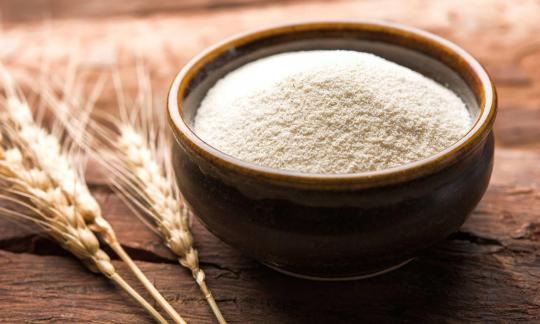

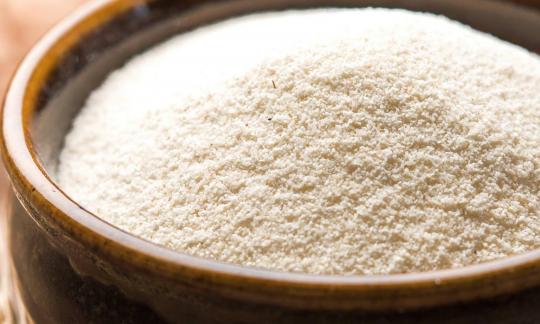

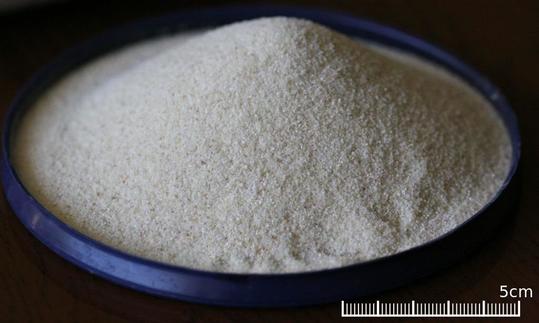



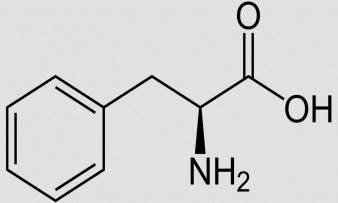
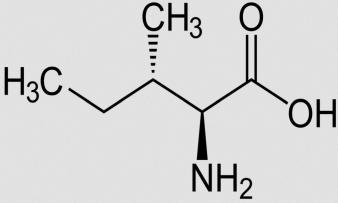


Comments